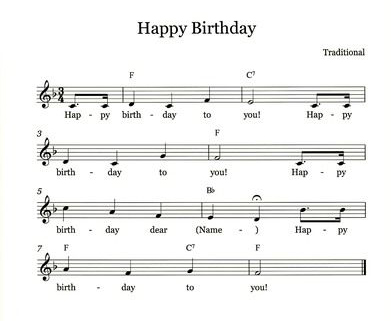How To Write a Song – Lesson 1: Elements of a Song
This is the first lesson in a series on how to write a song. Before getting into songwriting it is important to understand the elements that make up a song and the structure of a song. In this lesson, I’m going to talk about the different elements that make up a song.
The 4 elements that make up a song are:
1. The music – The music can be constructed using a chord progression, a riff, or both. A riff is a basic rhythmic figure that uses single notes and/or some basic stripped down chords, and is usually repeated. Most songs written with riffs will also have chords in them as well. A good example of this is Nirvana’s Come As you are. The intro and verse have a repeating riff while the chorus and bridge use chord progressions.
2. The melody – The melody is the sequence of notes and rhythm that the singer sings. It’s the most important part of the song and I’ll be discussing what makes for a strong melody in other lessons.
3. The lyrics: The lyrics are the words being sung using the melody. I’ll also have other lessons on writing great and effective lyrics.
4. The Rhythm: The rhythm is the beat, groove, or strum pattern of the song. It’s actually not as essential to defining the song because you can change the rhythm and the song will still be the same song. One exception to this might be in rap or hip hop.
As an example, let’s take the song Happy Birthday. Here is a good visual representation of the different elements of Happy Birthday shown in a typical chart format.

The music is shown as a chord progression above the measures and the melody is shown in music notation. The lyrics are written under the melody.
If you just played the chord progression without the melody you wouldn’t recognize it as being Happy Birthday. If you played just the melody, you would immediately recognize the song as being Happy Birthday. The lyrics and melody are what everybody sings… or tries to sing, at a birthday party, typically without any musical accompaniment.
The reason why I said earlier that the rhythm is not as essential of an element is because I could change the rhythm or play it in a different style and it would still be the same song. You’ve probably heard famous songs done in a different musical genre many times.
So when writing a song which Element do you start with? Any one of them. I typically start with the music because it’s the easiest and most natural thing for me, personally, to come up with. I also tend to think more harmonically and rhythmically and I find it’s easier for me to write a melody if I have a pre-existing chord structure. I think I’m a fairly decent lyricist but it’s definitely more laborious for me to write lyrics than music or a melody. Although I tend to start with music, you can start with lyrics or a melody. If starting with lyrics, you would typically write a melody to the lyrics, and then chords to the melody. If starting with a melody, you would write chords and lyrics to the melody.
In the next lesson on how to write a song, we’ll discuss song structure,
Click here for more information on guitar lessons with Mark Hamrock.
Check out Hamrock Music’s YouTube Channel for video lessons for learning guitar, bass guitar, music theory, songwriting, composing, and music production.

About the Author
Mark Hamrock has been Orange County’s premier guitar and bass guru since 1995, teaching students how to excel in every genre including rock, blues, classical, metal, funk, and country. After studying rock guitar with Rusty Anderson (Paul McCartney, Elton John, Steven Tyler of Aerosmith, Willie Nelson, Santana), classical guitar with David Tanenbaum, Scott Tennant, Ricardo Cobo, John Schneiderman, and Jazz with Alan Rowe (Stan Kenton Orchestra, Keith Jarret); Mark has gone on to tour extensively and perform in concerts featuring Jazz Legend Larry Carlton, Tim Reynolds (Dave Matthews Band), and Dave Mason with Traffic. He currently produces, composes, engineers, and teaches, and is working on developing a series of instructional books and videos for guitar and bass. In what little free time he has, Mark enjoys traveling, culinary arts, scuba diving, and entrepreneurial pursuits.

